As you most likely know by now, our most important thought on language teaching is building self-confidence. When learners feel confident, they are more likely to actively participate in the learning process. This includes trying out new vocabulary and grammar, engaging in conversations, and asking questions without fear of making mistakes. Confidence fuels motivation and perseverance, which are crucial for sustained language learning. Learners who believe in their ability to succeed are more likely to push through challenges and stay committed to their goals. Confidence fosters better communication skills. When learners feel comfortable using the language, they can express themselves more clearly and fluently, leading to more effective and enjoyable communication.
All our materials are based on issues of the everyday life, interesting ideologies from around the world, overall, always light and fun topics. The idea is that we make the students talk by creating a safe space and give something they will want to talk about, almost reaching a level of forgetting that they are in an English class.


These exercises are the jump start to the topic the material is based on, so the students get a pick of what will be discussed during the class. This can help them set realistic goals for their learning and pace themselves effectively.

The warm-up exercises help learners transition from their outside activities to the language learning environment. They are interactive and fun, grabbing the learner’s attention and setting a positive tone for the lesson. This section is always filled with questions. You do not need to ask all of them, it really depends on the student’s engagement level, but we prefer to provide more than enough. In this section there is always some extra vocabulary hidden, which you can work on in class. Overall, our well-designed warm-up exercises help learners become more receptive and ready to actively participate in the language learning process.
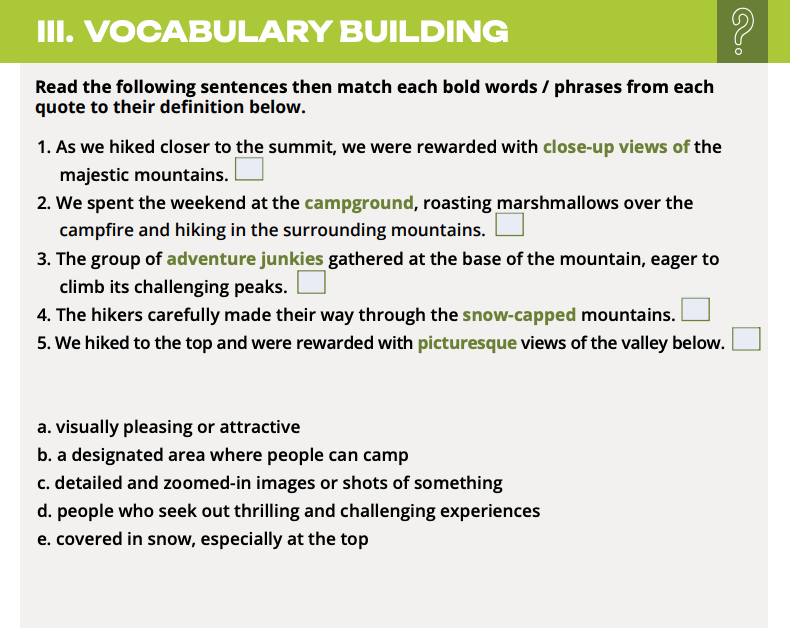
By preparing learners for new vocabulary, we make the learning process more efficient and effective. This section ensures that learners are not simply memorizing isolated words, but rather building a deeper understanding and ability to use the words in context. These exercises are already the preparation for the following reading or listening task. We normally pick a maximum of 10-12 words/phrases and throughout different activities the students can familiarize themselves with them.
Our lesson plans are based either on a video or on an article as we believe both inputs are equally important. The articles are normally adapted from newspapers or other websites and for the videos we use YouTube as a source.
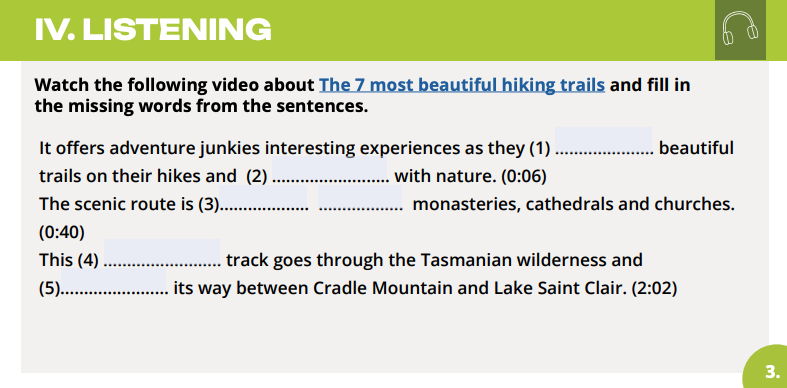
Articles provide a window into real-world language use. Learners encounter vocabulary and grammar used in natural contexts, not just simplified textbook examples. This helps them understand how the language functions in everyday situations.
By grappling with articles of varying lengths and complexities, learners develop their reading skills. They learn to decode unfamiliar words, understand sentence structure, and follow the flow of ideas.
For the article what we like to do is, ask the student to read it out loud and we take notes of the words which were not pronounced correctly, so after the students finished reading, we can give them our feedback. Then we let the students read again, but this time for themselves. During this reading we ask them to underline any new vocabulary that seems important, but they do not understand.
Watching videos and analyzing them can be a fantastic tool for language learners, offering a range of benefits similar to reading articles but with some unique advantages.
Videos provide exposure to spoken language at natural speed and with varying accents and intonations.
Learners can pay close attention to how native speakers pronounce words and sounds.
It combines listening comprehension practice, pronunciation improvement, cultural understanding, and caters to different learning styles, making it a valuable tool for language acquisition.
Regarding the video we normally let our students watch 2 times, preferably no subtitles, however if they struggle, for the 3rd time they can use the captions option.
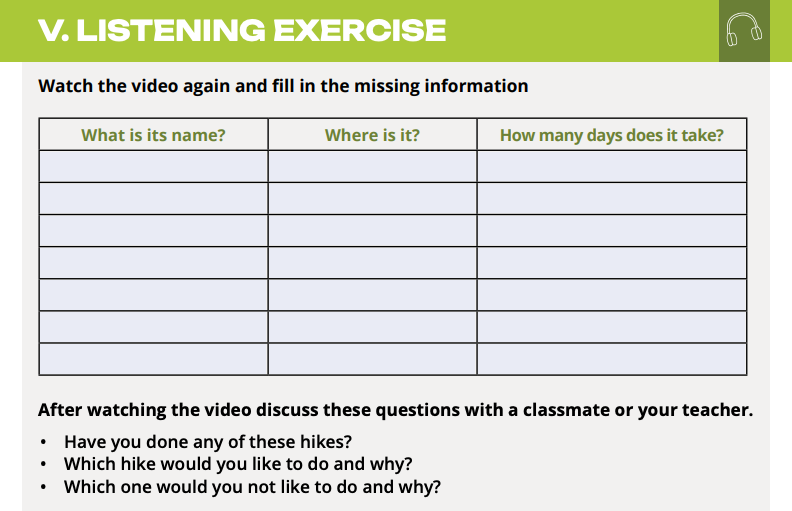
In both cases we follow up with comprehension questions to make sure the students really understood the incoming information.
Article analyzing exercises provide a well-rounded approach to language learning. They combine vocabulary building, grammar reinforcement, and cultural awareness, all within a stimulating and engaging context.
Analyzing the video encourages learners to actively listen and decipher the spoken content, improving their ability to understand spoken language.
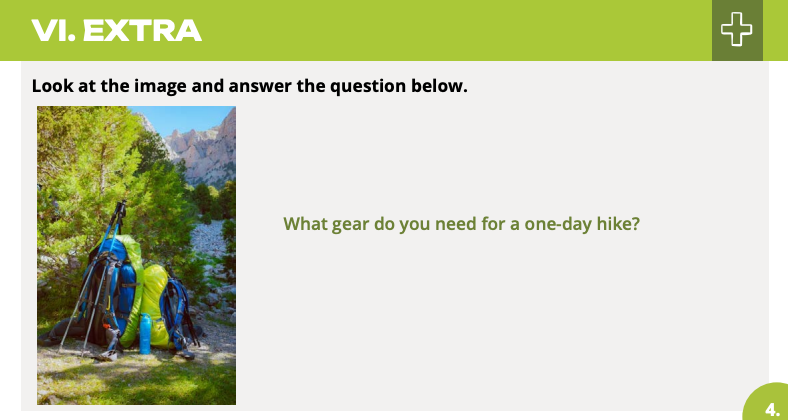
In this section the exercises vary. It can be quotes from the video/article focusing on specific phrases, idioms, expressions, etc (giving the chance to practice the new vocabulary in active conversation). Or it might be extra vocabulary, such as phrasal verbs, but in any case, strictly related to the original topic of the material.
Mastering these elements allow learners to express themselves in a more natural way, just like native speakers. Idioms and expressions add flair and figurativeness, while phrasal verbs provide concise alternatives to common verbs. Idioms and expressions are often rooted in a language’s culture and history. By learning them, learners gain insights into the way native speakers think and perceive the world. Using them smoothly demonstrates a deeper understanding of the language and boosts a learner’s confidence in their speaking abilities.
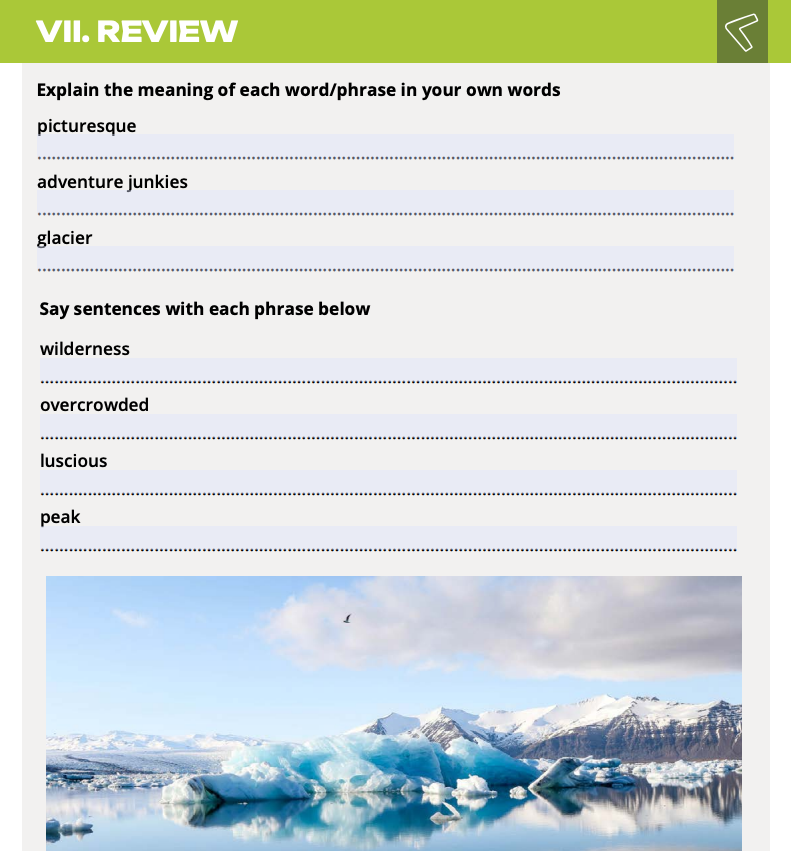
Just like with any new information, briefly reviewing new vocabulary at the end of a lesson helps solidify it in the learner’s mind. This repetition strengthens the memory pathways, making it more likely the learner will remember the words later.
Here we ask the students to use or describe some of the new words they have learnt from the material.

Writing serves as a valuable tool for language learners. While essays focus on developing formal writing skills, organization, and argumentation, emails provide practice in informal communication, clarity, and real-world application. By combining these writing exercises, learners gain a well-rounded skillset for written communication in the target language.
This section we would recommend giving for homework. The essay/e-mail writing exercises are strictly related to the original topic, which again gives a chance for the students to incorporate the newly learnt vocabulary. Many of these exercises require the student to search for information on the Internet, which again is an extra opportunity to use the language, which after all is the key to success…